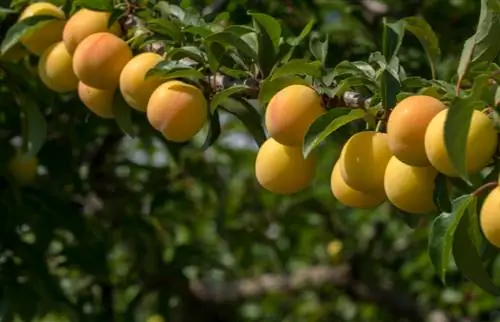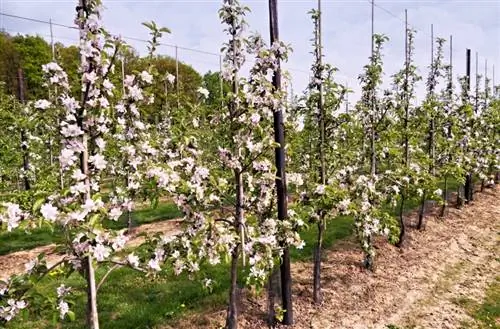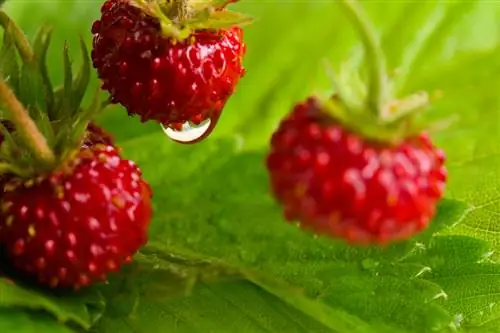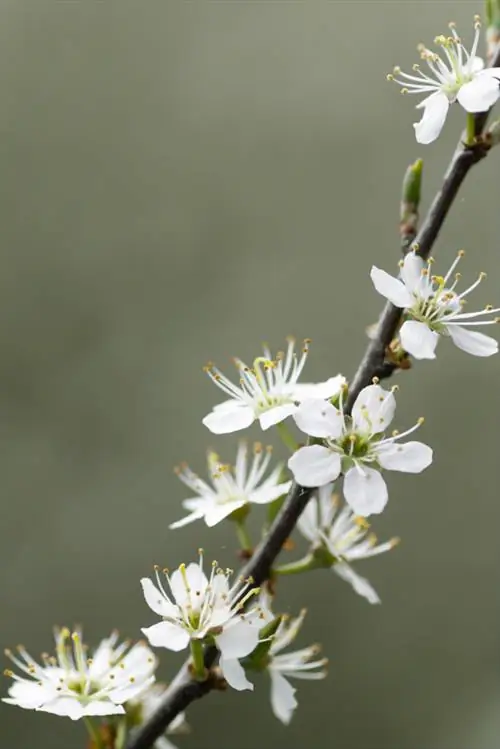- Author admin [email protected].
- Public 2023-12-16 16:46.
- Last modified 2025-01-23 11:22.
The mirabelle plum tree is quite common here, even if it ranks far behind the apple tree. Everyone should know that it bears numerous spherical fruits that shine with their yellow to match the sun. But how much more do you know about this fruit tree?
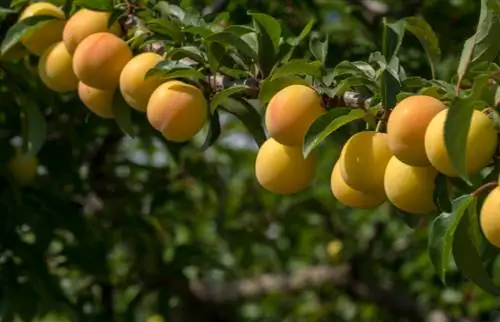
What are the most important properties of the mirabelle plum tree?
The mirabelle plum tree (Prunus domestica subsp. syriaca) is a deciduous, hardy fruit tree that bears golden-yellow, sweet fruits. It prefers sunny locations, grows up to 6 m high and lives 30-120 years. The flowering period is in April and May.
Name, origin and distribution
- Botanical name: Prunus domestica subsp. syriaca
- Common names: Yellow plum; often mistakenly called cherry plum
- Genus: Prunus
- Family: Rosaceae
- Origin: Asia Minor (Northern Perisen/Iran)
- Distribution: Central and Southern Europe, North Africa
Tip
If you want to plant a mirabelle plum tree in the garden, you can choose from many different varieties in nurseries. The best known is certainly the “Mirabelle of Nancy”.
Growth, appearance and fruits
- hardy, summer-green fruit tree
- reaches up to 6 m in size
- lives between 30 and 120 years
- Leaves are smooth and green, velvety on the underside
- epileptic, up to 8 cm long and up to 5 cm wide
- Flowering time is April to May
- white flowers appear in clusters
- Fruits are cherry-sized, round and golden yellow
- sweet, aromatic taste
- Fruit ripens in August and September
Preferred living conditions
The mirabelle plum tree likes warmth and does well in a sunny location. But at the same time it should also be protected. That's why proximity to a wall is ideal. The soil must be loose, permeable and nutrient-rich. The soil should be slightly moist and neutral to alkaline.
Propagation
A young mirabelle plum tree can be bought commercially, but can also be easily grown from a core at home. Garden centers, on the other hand, practice grafting.
Care effort during cultivation
Young trees need to be watered regularly after planting. They benefit from a training cut and should be protected from frost in winter with fleece (€32.00 on Amazon). A well-rooted tree is only watered during long dry periods and fertilized with compost annually in spring. However, the annual thinning cuts in spring do the most work in care.
Diseases and pests
The most common diseases are Monilia tip drought, Sharka disease and Scrapshot disease. Bag gall mites, aphids and frostbite moths are pests that can damage the mirabelle plum tree.

